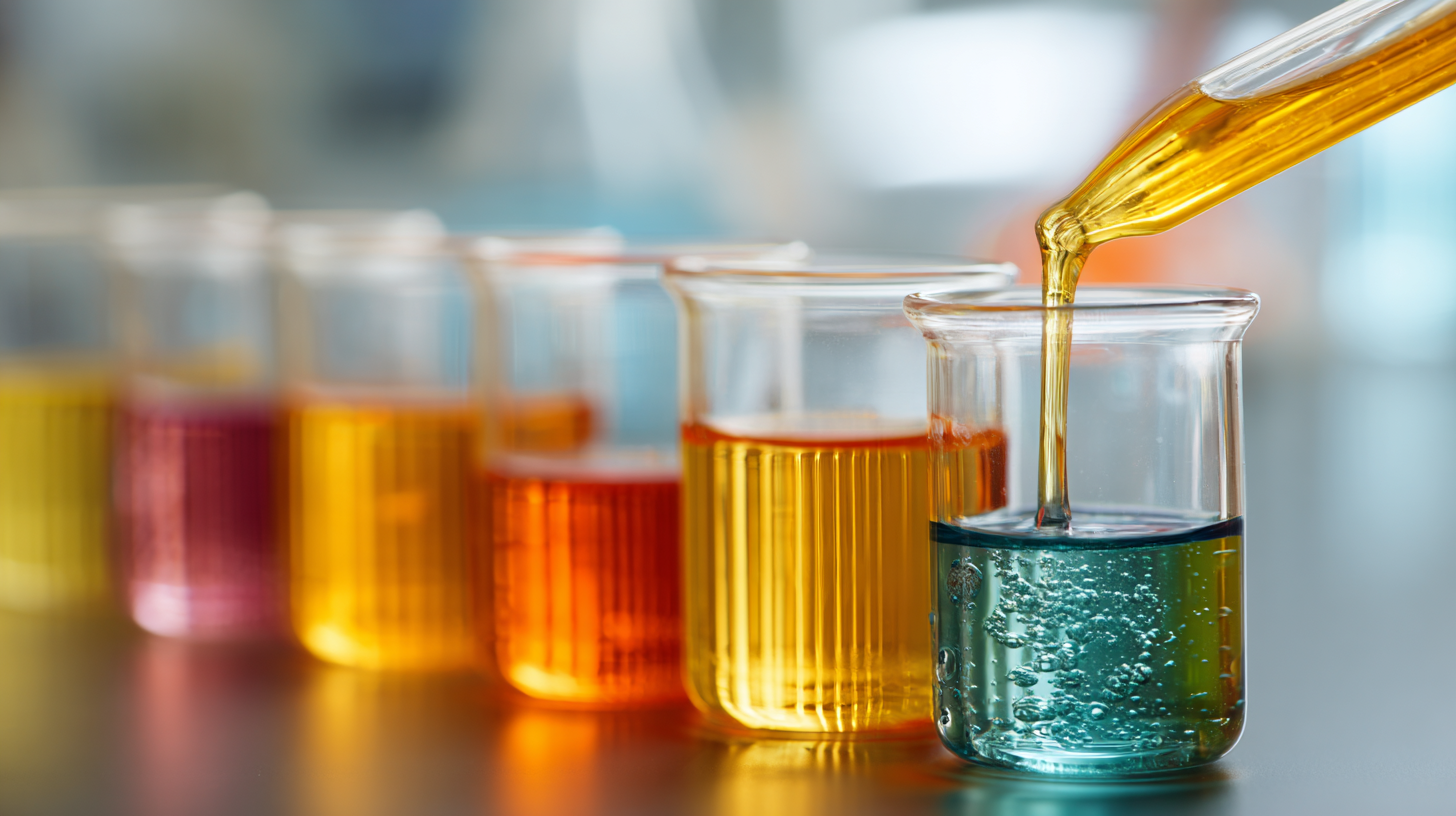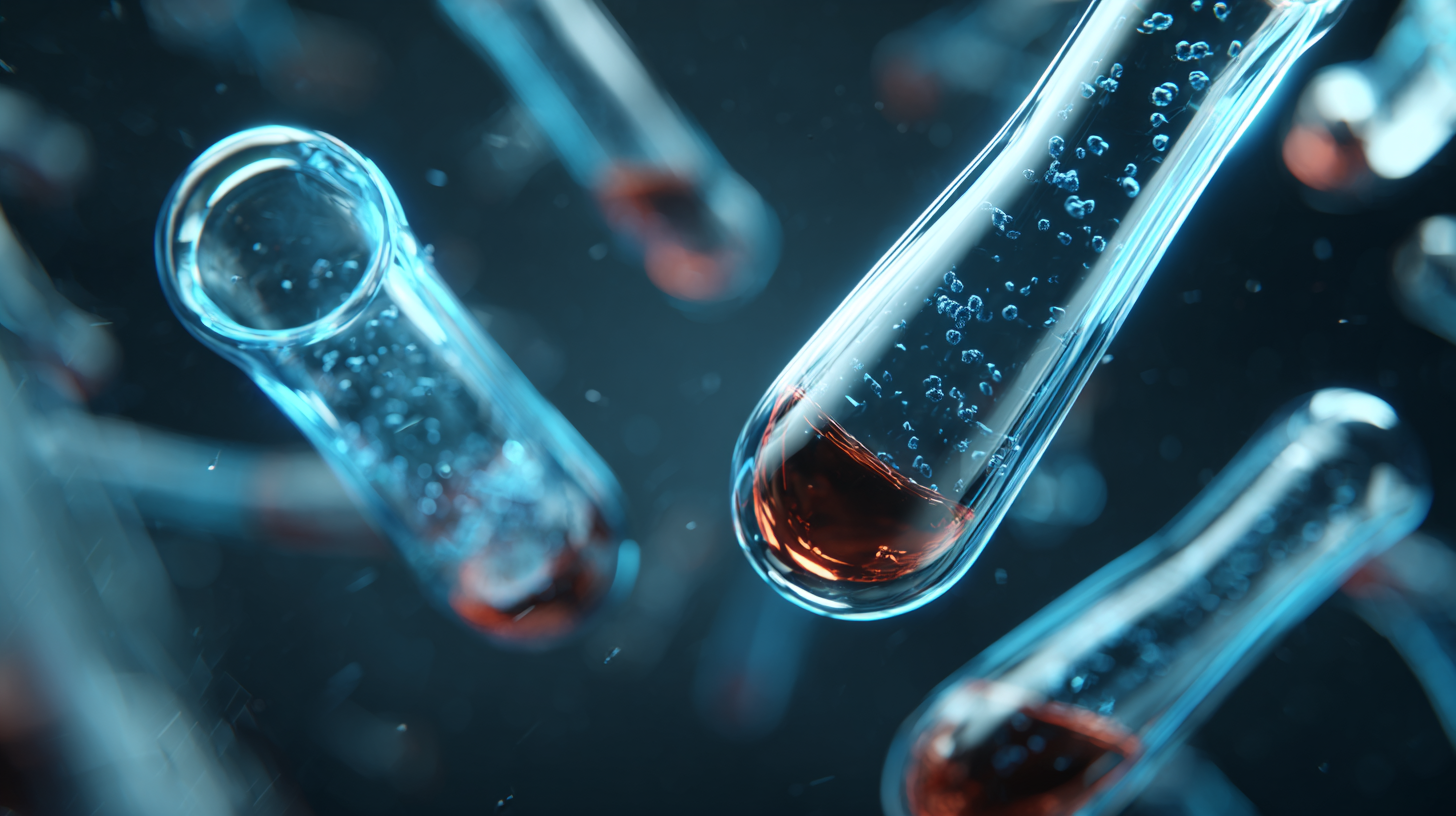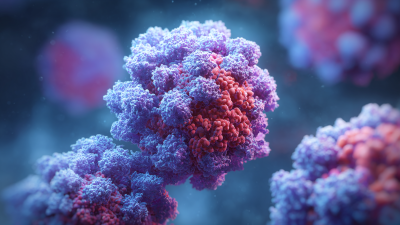Leave Your Message
In the rapidly evolving landscape of biochemical research, the utilization of reagents like N Hydroxysuccinimidyl (NHS) has gained significant attention due to its applications in various fields, including bioconjugation and drug development. According to a research report by Markets and Markets, the global bioconjugates market is projected to reach $11.7 billion by 2025, reflecting the increasing need for efficient and versatile chemical agents in both academic and industrial settings. NHS plays a pivotal role in this market, acting as a crucial linkage strategy for the conjugation of proteins, peptides, and other biomolecules.

With its ability to form stable amide bonds and enhance the efficiency of conjugation reactions, N Hydroxysuccinimidyl has become an essential tool for researchers aiming to create complex biomolecular systems. Furthermore, the adoption of NHS in various applications, such as targeted drug delivery and diagnostic imaging, underscores its importance in advancing therapeutic strategies. As research projects become more ambitious, understanding the best practices and methodologies for utilizing NHS will not only improve experimental outcomes but will also contribute to the overall progress in life sciences and biomedical research. This article provides ten essential tips for optimizing the use of N Hydroxysuccinimidyl in your research projects, ensuring you harness its full potential effectively.
 N Hydroxysuccinimidyl (NHS) is a widely used chemical in bioconjugation and protein labeling, enhancing the efficiency of many research projects. This compound allows for the formation of stable amide bonds between biomolecules and provides versatility in various applications, including drug development and diagnostics. Understanding NHS's reactive nature and optimal conditions is crucial for achieving successful labeling and conjugation outcomes.
N Hydroxysuccinimidyl (NHS) is a widely used chemical in bioconjugation and protein labeling, enhancing the efficiency of many research projects. This compound allows for the formation of stable amide bonds between biomolecules and provides versatility in various applications, including drug development and diagnostics. Understanding NHS's reactive nature and optimal conditions is crucial for achieving successful labeling and conjugation outcomes.
When working with NHS, one essential tip is to ensure that your reaction environment is optimal. Maintain a neutral pH, as this improves the reactivity of NHS and helps in achieving better yields. Additionally, it's important to prepare your target biomolecules in a buffer solution that avoids nucleophiles that could interfere with the reaction.
Another tip is to carefully control the stoichiometry of NHS to your target, as an excess can lead to side reactions and undesired products. Start with a modest amount and gradually increase, monitoring the reaction to determine the optimal conditions. Lastly, always purify your conjugate post-reaction to eliminate unreacted NHS, which can lead to issues in downstream applications. By following these insights, researchers can maximize the potential of N Hydroxysuccinimidyl in their studies.
When working with N Hydroxysuccinimidyl (NHS) in the laboratory, proper handling and storage practices are crucial to maintain its efficacy and ensure safety. NHS is widely employed as a bioconjugation reagent, particularly in protein labeling and drug delivery systems due to its ability to form stable amide bonds with primary amines. According to a 2022 industry report by BioReagents, improper handling can lead to significant degradation of NHS, resulting in reduced yield and compromised experimental outcomes.

To mitigate these risks, it is recommended to store NHS in a cool, dry place away from light, ideally at -20°C, to prolong its shelf life. A 2021 analysis published in the Journal of Chemical Research highlighted that NHS can hydrolyze in aqueous solutions, suggesting that solutions should be prepared fresh and used promptly. Additionally, using inert atmospheres during storage can prevent oxidation and further protect the integrity of the reagent. Implementing these best practices will enhance the reliability of results in research studies, allowing for more accurate and reproducible data.
N Hydroxysuccinimidyl (NHS) reagents have become indispensable in research projects, particularly in the optimization of experimental design. When utilizing NHS, it is crucial to consider factors such as reagent concentration, reaction duration, and the nature of the target molecules. Data from industry reports indicate that optimizing these parameters can enhance coupling efficiency by up to 50%, leading to more robust experimental outcomes.
Recent innovations in hydrogel technology further emphasize the importance of careful design considerations. Hydrogels have shown significant promise in tissue engineering, enabling tunable cell interactions and soft mechanics that are essential for clinical applications. Research suggests that the incorporation of reactive NHS moieties in hydrogel scaffolds can facilitate improved biomolecular binding and cell adhesion, dramatically increasing cell viability rates observed in various studies. For instance, hydrogels with integrated NHS groups have exhibited enhanced functional properties, supporting advanced therapeutic applications in both cell therapy and non-cell therapies.
By integrating NHS into experimental designs, researchers can leverage the synergetic effects of hydrogels and reactive chemistry, unraveling new pathways for innovative therapeutic solutions. A comprehensive understanding of these design needs is vital for advancing clinical translation and achieving successful experimental outcomes.
Interpreting data from N Hydroxysuccinimidyl applications is critical to deriving meaningful insights from your research. When analyzing results, it's essential to consider the specificity and efficiency of this reagent in your experimental setup. A thorough understanding of the reaction mechanisms at play can provide clarity on the outcomes you observe.
For instance, variations in reaction conditions can significantly affect the labeling efficiency, leading to different data interpretations.
Tip: Always run control experiments alongside your main assays to establish baseline data. This allows for a clearer comparison and validation of your experimental results.
Another vital aspect to consider is the stability of the compounds formed during your experiments. Degradation of labeled products can skew your data, making it crucial to monitor their stability over time. Utilizing techniques such as mass spectrometry or HPLC can help assess the integrity of your samples and ensure accurate results.
Tip: Document all experimental conditions meticulously, including concentration, time, and temperature, to facilitate more reliable data interpretation. This consistent approach not only enhances reproducibility but also aids in pinpointing any discrepancies in your findings.
When employing N Hydroxysuccinimidyl (NHS) in your research, it's crucial to be aware of common troubleshooting issues that may arise during its use. One primary concern is the stability of NHS esters, which can degrade rapidly at higher temperatures or during prolonged storage. According to a report by BioTechniques, NHS can lose up to 50% of its potency within a few days if not stored properly. Maintaining optimal storage conditions—typically at -20°C in a desiccated environment—will help ensure that you maximize the utility of NHS in your experiments.
Another common issue involves the efficiency of conjugation reactions when using NHS for protein labeling. A study published in the Journal of Biochemistry highlights that achieving an optimal pH level between 7.4 and 8.0 is essential for the efficient activation of amine-containing compounds. Deviating from this range can significantly reduce the coupling efficiency, leading to inconsistent results. Therefore, consistent monitoring of the pH and buffer conditions during the conjugation process is vital. By addressing these key troubleshooting areas, researchers can significantly enhance the reliability and reproducibility of their findings when using N Hydroxysuccinimidyl in their projects.
| Tip Number | Tip Description | Common Issues | Troubleshooting Steps |
|---|---|---|---|
| 1 | Optimize pH levels before reaction | Suboptimal conjugation efficiency | Use a buffer to maintain pH at 7.4 |
| 2 | Handle N Hydroxysuccinimidyl with gloves | Contamination of the reagent | Always wear gloves and avoid touching surfaces |
| 3 | Use fresh N Hydroxysuccinimidyl | Decreased reactivity | Avoid using expired or improperly stored reagents |
| 4 | Carefully calculate reactant stoichiometry | Poor yield of conjugates | Use molar ratios based on final product requirements |
| 5 | Optimize reaction time | Incomplete reactions | Monitor reaction progress and adjust time accordingly |
| 6 | Store conjugates properly | Degradation of products | Store at -20°C or lower with a desiccant |
| 7 | Utilize protective measures against moisture | Hydrolysis of N Hydroxysuccinimidyl | Work in a dry atmosphere or glove box |
| 8 | Regularly calibrate pipettes and balances | Inaccurate measurements | Check calibration and recalibrate as necessary |
| 9 | Implement a quality control protocol | Inconsistent results | Test each batch against standards for verification |
| 10 | Document all procedures thoroughly | Reproducibility issues | Maintain records for all experiments and results |






